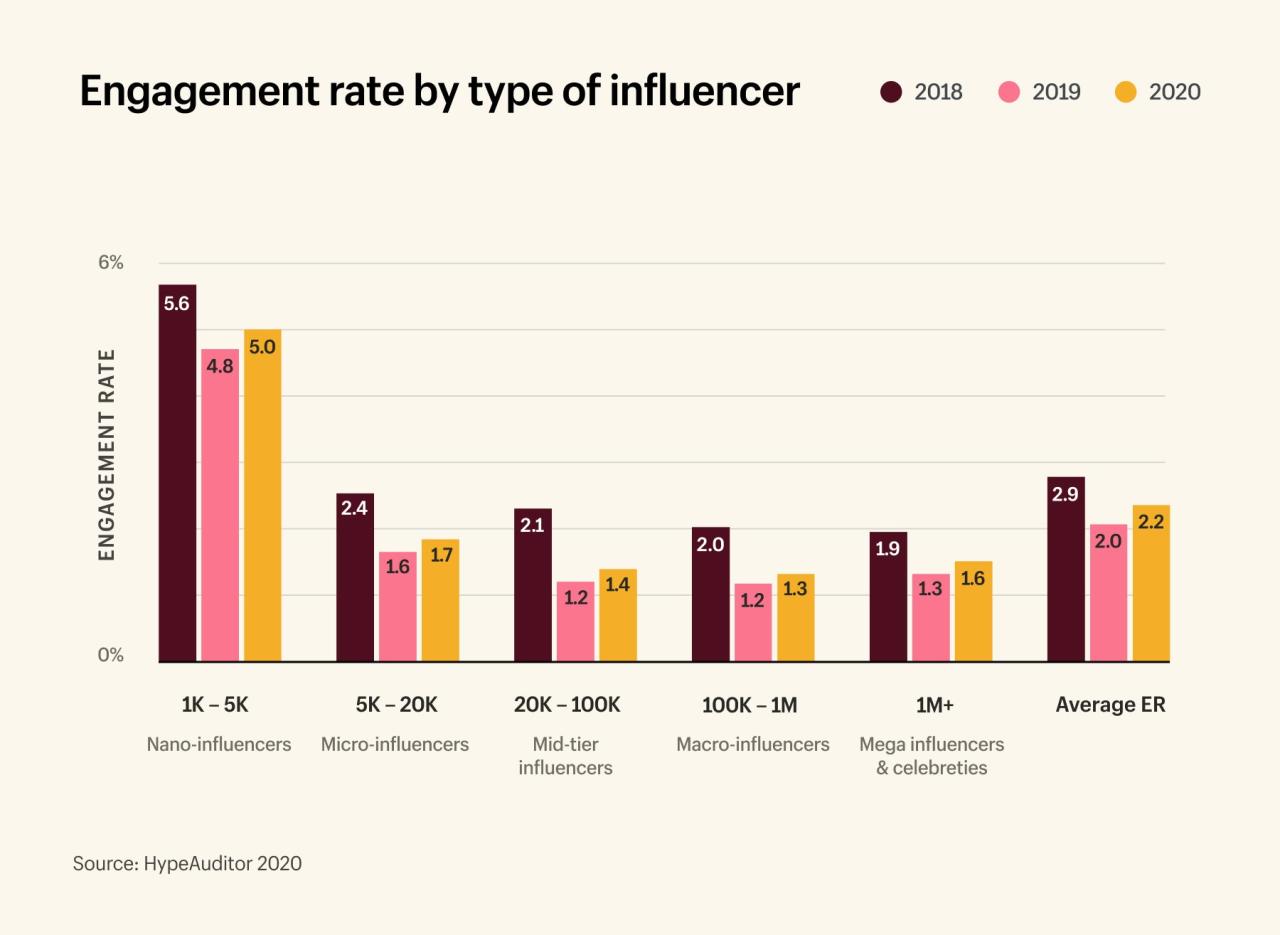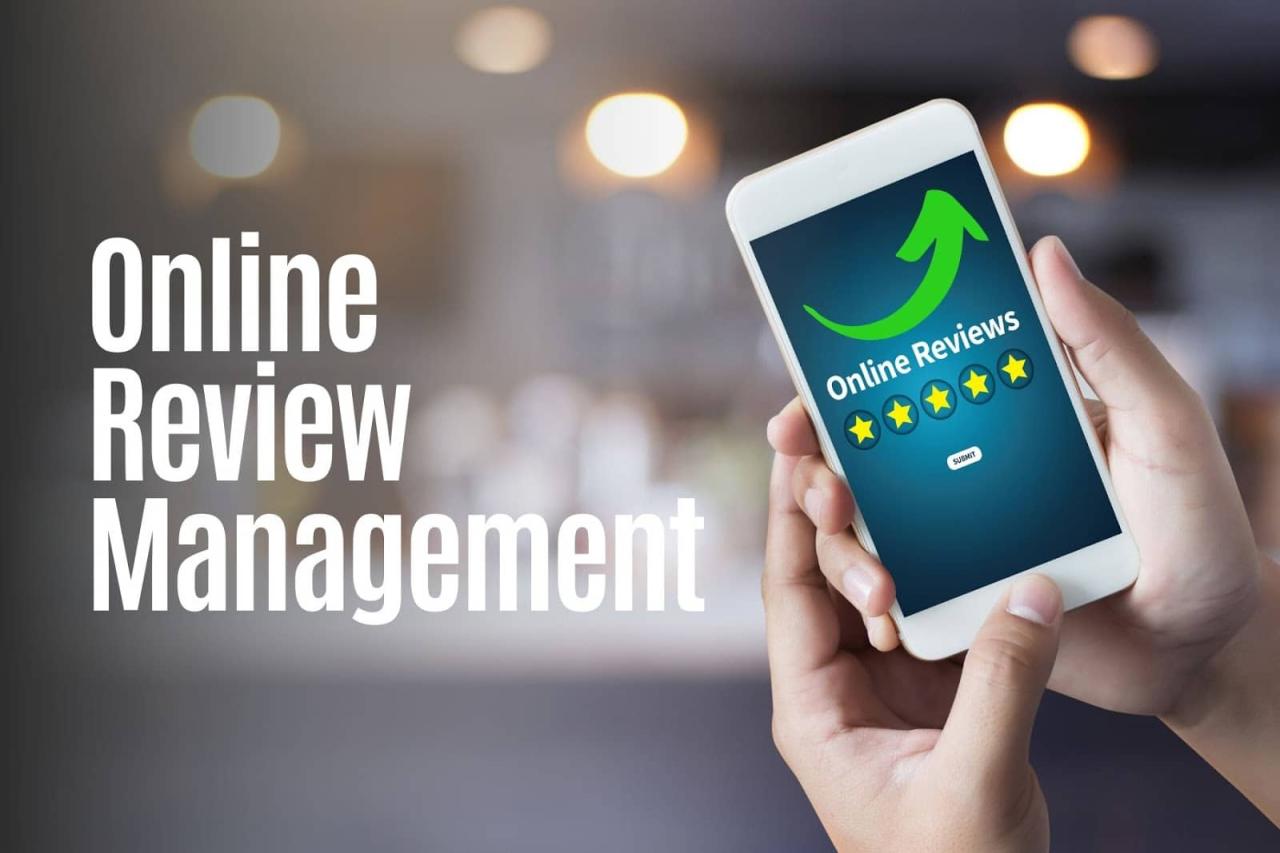Influencer Marketing Trends
Starting with Influencer marketing trends, let’s uncover the latest developments shaping the industry and how brands are adapting to these changes.
This dynamic landscape showcases the evolving strategies and innovative approaches that influencers and brands are embracing to connect with audiences in more impactful ways.
Current Influencer Marketing Landscape

In today’s digital age, influencer marketing has become a prominent strategy for brands to reach their target audience. With the rise of social media platforms, influencers have gained significant influence over consumer behavior and purchasing decisions.
Key Changes and Developments
- Micro-Influencers: Brands are increasingly collaborating with micro-influencers who have a smaller but highly engaged following, leading to more authentic and relatable content.
- Video Content Dominance: The popularity of video content on platforms like TikTok and Instagram Reels has led to a shift towards more video-centric influencer marketing campaigns.
- Long-term Partnerships: Brands are moving away from one-off partnerships and towards long-term relationships with influencers to build credibility and loyalty.
Impact of Social Media Platforms
- Social media platforms like Instagram, YouTube, TikTok, and Snapchat have become the primary channels for influencer marketing due to their vast reach and engagement levels.
- Algorithm Changes: Influencer marketing strategies are constantly evolving to adapt to algorithm changes on platforms, requiring influencers and brands to stay updated and innovative.
- Authenticity and Transparency: Consumers are demanding more authenticity and transparency from influencers, leading to a rise in genuine content and disclosure of sponsored partnerships.
Emerging Platforms and Formats
Influencer marketing is constantly evolving, and new platforms and formats are continuously emerging to keep up with the ever-changing digital landscape. Brands are always on the lookout for innovative ways to connect with their target audiences through influencer partnerships. Let’s dive into some of the latest trends in influencer collaborations and platforms.
TikTok Challenges and Instagram Reels
One of the most popular trends in influencer marketing is the use of TikTok challenges and Instagram Reels. With the rise of short-form video content, brands are leveraging these platforms to reach a younger demographic and create engaging and shareable content. Influencers are teaming up with brands to participate in viral challenges, showcasing products or services in a fun and creative way.
Micro-influencers and Brand Partnerships
Another emerging trend is the growing influence of micro-influencers in brand partnerships. These influencers, with smaller but highly engaged audiences, are proving to be valuable assets for brands looking to connect with niche markets. Micro-influencers often have a more authentic and personal relationship with their followers, leading to higher levels of trust and credibility in their recommendations.
Data-Driven Strategies
In the ever-evolving landscape of influencer marketing, data-driven strategies have become essential for brands looking to maximize their ROI and campaign effectiveness. By leveraging data analytics, brands can make informed decisions, measure results, and optimize their campaigns for better performance.
Role of Data Analytics
Data analytics plays a crucial role in influencer marketing campaigns by providing valuable insights into audience behavior, demographics, engagement rates, and overall campaign performance. By analyzing this data, brands can identify the most effective influencers, content types, and messaging strategies to reach their target audience effectively.
- Tracking key performance indicators (KPIs) such as engagement rates, click-through rates, and conversion rates to evaluate the success of influencer partnerships.
- Monitoring audience demographics and behavior to ensure that campaigns are reaching the right target demographic.
- Utilizing sentiment analysis to gauge audience reactions and adjust campaign messaging accordingly.
Leveraging Data for ROI Measurement
Brands are increasingly using data to measure the return on investment (ROI) of their influencer marketing campaigns. By tracking the impact of influencer collaborations on key metrics such as sales, website traffic, and brand awareness, brands can quantify the success of their campaigns and make data-driven decisions for future initiatives.
- Implementing tracking links and unique promo codes to attribute sales directly to influencer partnerships.
- Utilizing tools like Google Analytics and social media analytics platforms to measure website traffic and engagement driven by influencer content.
- Conducting A/B testing to compare the performance of different influencer collaborations and optimize campaign strategies for better ROI.
AI and Machine Learning in Influencer Marketing
The use of artificial intelligence (AI) and machine learning technologies has revolutionized influencer marketing by enabling brands to automate influencer selection, optimize campaign performance, and predict future trends. These advanced technologies analyze vast amounts of data to identify the most relevant influencers, predict audience behavior, and personalize content for maximum impact.
- AI-powered influencer discovery platforms that use algorithms to match brands with influencers based on audience demographics, engagement rates, and content relevance.
- Machine learning algorithms that analyze campaign data in real-time to optimize content, targeting, and messaging for better performance.
- Predictive analytics tools that forecast trends and audience preferences to help brands stay ahead of the curve and create more impactful influencer partnerships.
Authenticity and Transparency: Influencer Marketing Trends

In the world of influencer marketing, authenticity and transparency have become crucial factors in building successful partnerships and maintaining consumer trust. As the industry continues to evolve, influencers are adapting their content creation strategies to focus on more authentic and transparent communication with their audiences.
Importance of Authenticity and Transparency
- Authenticity builds credibility: Audiences are more likely to trust influencers who are genuine and transparent about their partnerships and sponsored content.
- Transparency fosters trust: Openly disclosing sponsored posts and partnerships helps influencers establish a sense of honesty and integrity with their followers.
- Long-term relationships: Brands are more inclined to work with influencers who prioritize authenticity and transparency, as it leads to more meaningful and long-lasting collaborations.
Influencers Adapting to Authentic Content Creation, Influencer marketing trends
- Storytelling approach: Influencers are shifting towards a storytelling approach to create more authentic and engaging content that resonates with their audience on a personal level.
- Showcasing real-life experiences: Sharing genuine experiences and opinions about products or services helps influencers connect with their followers in a more authentic way.
- Avoiding over-promotion: Influencers are being mindful of over-promoting products and services, focusing instead on integrating them naturally into their content.
Impact of Influencer Scandals on Brand Partnerships and Consumer Trust
- Loss of credibility: Influencer scandals can tarnish an influencer’s reputation and credibility, leading to a loss of trust from both brands and consumers.
- Damage to brand reputation: Brands associated with influencer scandals may face backlash and damage to their own reputation, affecting consumer perception.
- Rebuilding trust: In the aftermath of scandals, influencers and brands must work diligently to rebuild trust with their respective audiences through transparency and authenticity.
Niche Markets and Diversification

In the ever-evolving landscape of influencer marketing, targeting niche markets has become a prominent trend. This strategy involves collaborating with influencers who have a dedicated and engaged following within a specific industry or interest group. By tapping into these niche markets, brands can reach a highly targeted audience and drive more impactful results.
Diversification of influencers across different industries and interests is also on the rise. Brands are no longer solely focusing on mainstream influencers with massive followings. Instead, they are recognizing the value of working with micro-influencers and nano-influencers who have a more specialized and loyal fan base. This diversification allows brands to connect with a wider range of consumers and create more authentic and relatable content.
Effectiveness of Niche Influencer Collaborations
Collaborating with niche influencers can be highly effective in comparison to working with mainstream influencers. Niche influencers often have a deeper connection with their audience, leading to higher levels of engagement and trust. Their followers are more likely to be genuinely interested in the products or services being promoted, resulting in better conversion rates for brands.
- Niche influencers offer a more targeted reach, allowing brands to connect with specific demographics or interest groups.
- Collaborations with niche influencers can result in higher engagement rates and increased authenticity, as the content feels more genuine to their followers.
- Niche influencer collaborations are often more cost-effective than partnerships with mainstream influencers, making them a valuable option for brands with limited budgets.
Essential FAQs
How are brands leveraging data in influencer marketing campaigns?
Brands are using data analytics to measure ROI, track campaign effectiveness, and make informed decisions on influencer selection.
What impact do micro-influencers have on brand partnerships?
Micro-influencers are gaining popularity for their authenticity and niche audiences, leading to more impactful brand partnerships.






